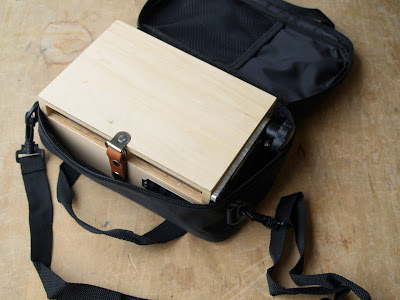 "Fog at Glensevern" 9x12, pastel
"Fog at Glensevern" 9x12, pastel
September 2010
Campobello Island in the Canadian Maritimes
Hard to believe, but another summer has come and gone. Although we still have a couple of workshops to teach in the Northeast (Maine and New Hampshire), we are winding down. By mid-October, we'll be on our way west for the winter.
This has been one of the hotter summers in our six years here. Normally, it's cool enough that we keep the windows closed at night, but even in early September, we were keeping them open. It's been dry, too. As a result, we've had some great painting weather.
As you may know, I do many small paintings for demonstrations and small sketches. Most of these will never go into a gallery. So, I've created an online "studio store" where you can buy them. I'll be adding paintings to this store over time, so check back often! The link for the store is
http://johnsonstudiostore.blogspot.com/. I think you'll find some good deals there.
Our annual "Two Countries, One Bay" open studio tour is the weekend of September 18-19. This is our fourth year, and as one of the founders, I'm proud to say we have more artists than ever - over 50! If you're in the area, I invite you to visit us. For full details, schedules and maps, visit
http://www.TwoCountriesArt.com. For the tour, I'll be doing demonstrations in oil and pastel right outside my gallery, Friar's Bay Studio Gallery (
www.friarsbaygallery.com).
The Acadia Invitational II exhibition continues at Argosy Gallery in Bar Harbor, Maine. I was one of 30 painters invited to participate in this show. The show runs through September 2011 (yes, that's for a full year!) I hope you'll have a chance to see it. You can see most of the works online at the Argosy Gallery site,
www.argosygallery.com.
I'm continuing to work on a series of short videos for my series,
Plein Air Essentials. The latest in these is "Creating a Sense of Distance," which includes a brief pastel demonstration. You can get this video and others at my Lulu store,
http://stores.lulu.com/miragenm. Videos are priced between 99¢ and $1.99. I'll be adding more videos over time.
Speaking of videos, the first of my full-length demonstration videos is now available through F&W Media, publishers of
The Artist's Magazine and
The Pastel Journal. You can get
Backpacker Painting: Outdoors in Pastel for $16.99 from Artistsnetwork.tv.
Follow this link to see a preview or to order. The oil video will be released in September, and I'll post a note to my blog when it's out.
In case you missed the news earlier, I've been juried into the 2010/2011 Plein Air Southwest event. Sponsored by the Outdoor Painters Society, this event spans several months and has events at the Grand Canyon, Ouray (CO), Prescott (AZ), the Texas coast and Dallas. Some of the participating artists include my friends Bob Rohm, Ann Templeton, Jill Carver and Bill Cramer. The show opens April 8 at Southwest Gallery in Dallas. Here's a link to the show page:
http://www.pleinairsouthwest.com/Index.html
There's still time to get in on my popular Paint Sedona workshops this winter. I offer three levels of workshops:
- Traditional plein air workshops (all levels of student welcome)
- Advanced topic plein air workshops (intermediate-advanced students only; this winter's topic, "Large Format Painting")
- Mentoring plein air workshops (intermediate-advanced students or professionals only)
That's all the news for now. The next time you get my newsletter, I'll be in Sedona!
Michael





















